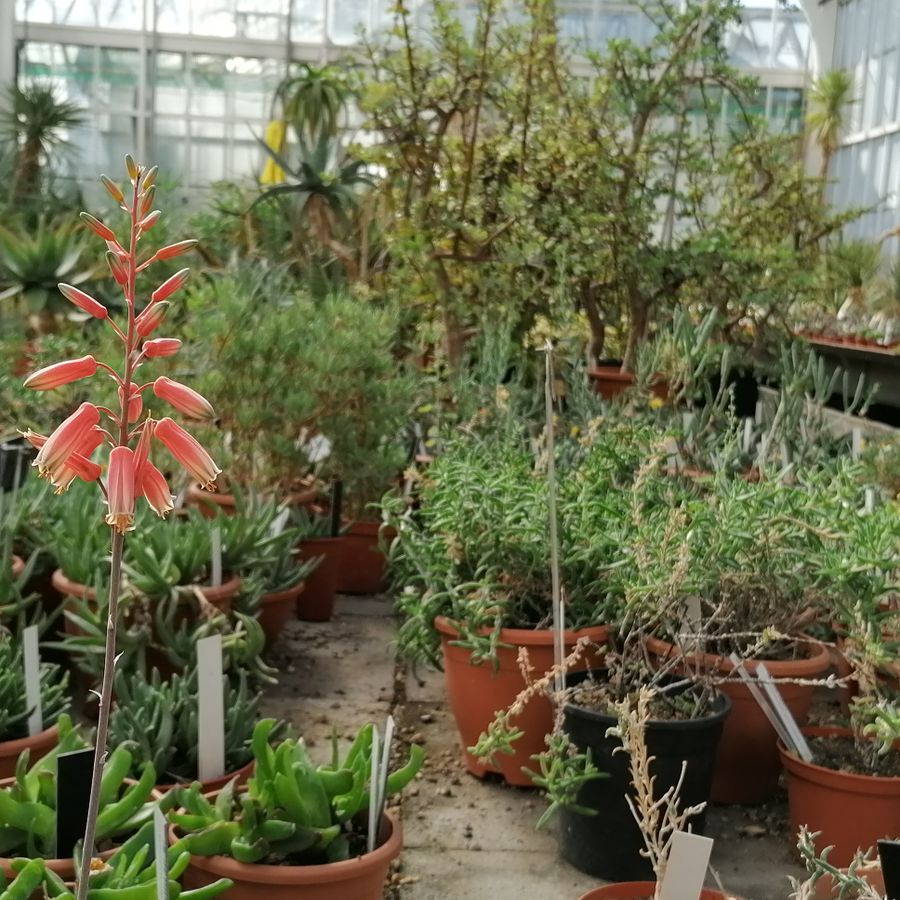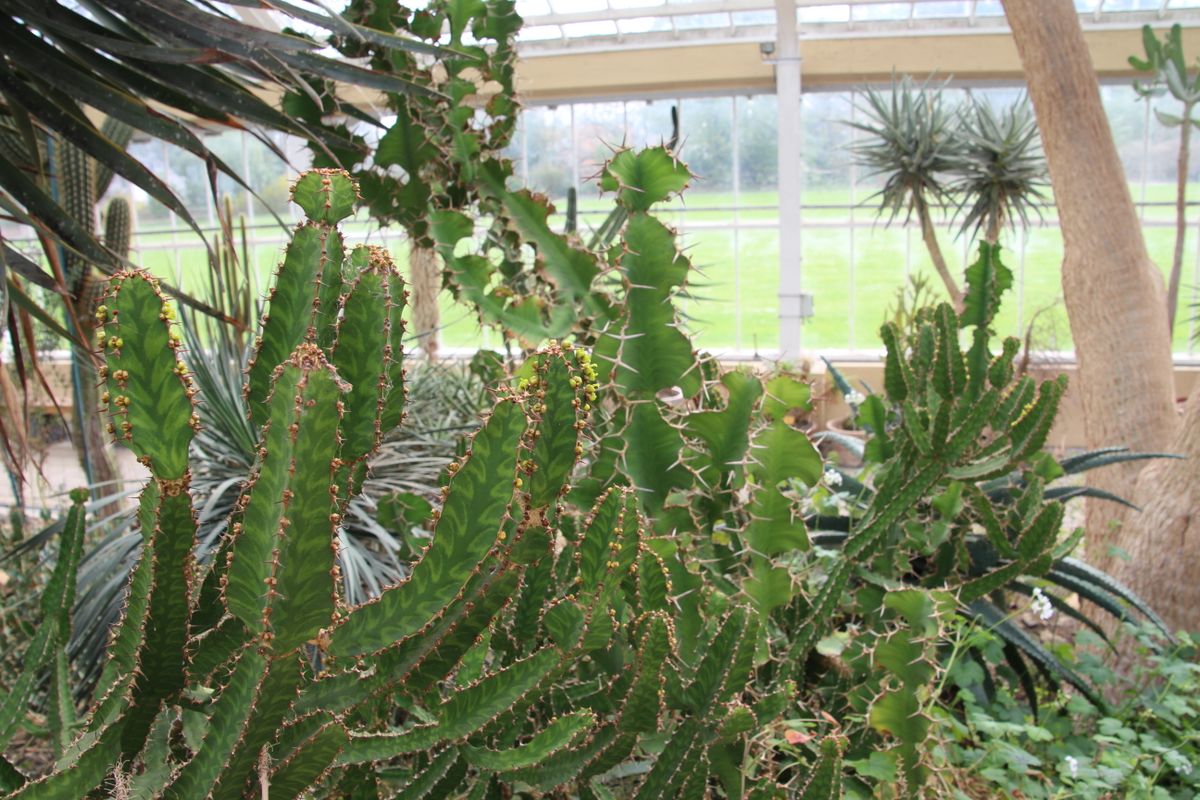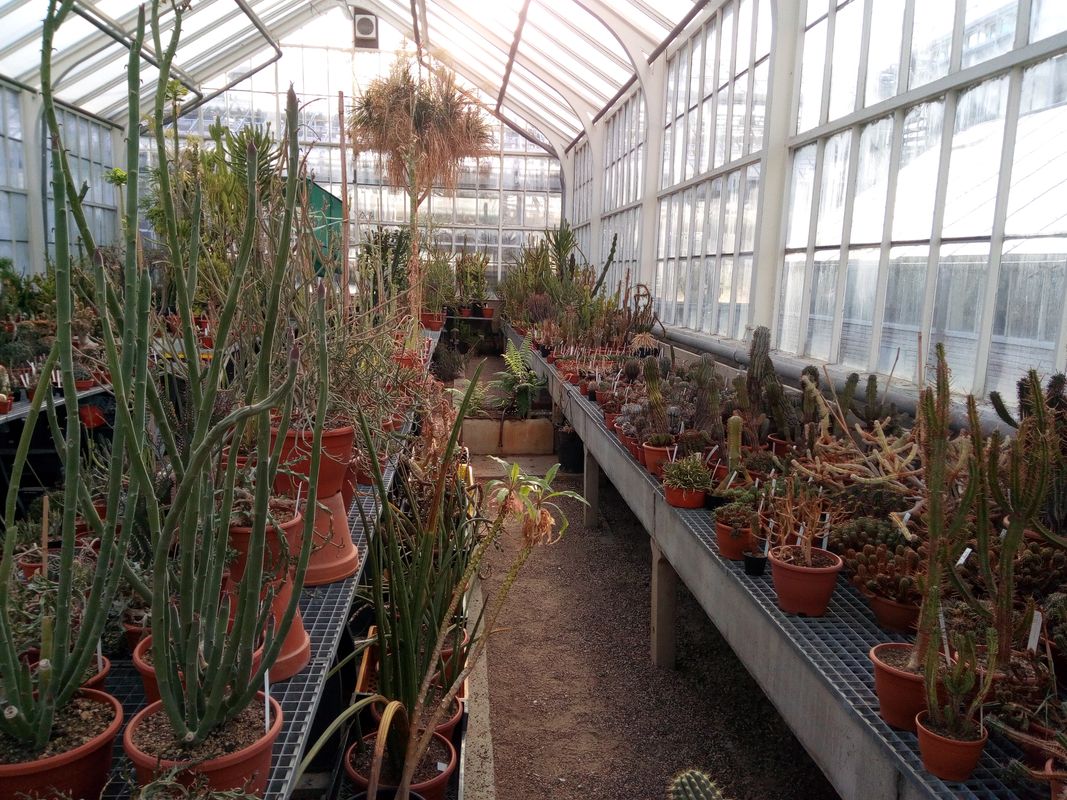
Drought champions
Succulents
In (temporarily) dry regions of the world, many plants store water in their organs to bridge periods of drought. Such plants have a thickened, fleshy stem or leaves and are called succulents.
The Botanic Garden has a very rich historical collection of succulents from all corners of the globe, including many cactus species. Even today, this collection is still expanding. Many of these plants are threatened in the wild by habitat destruction or collecting. Moreover, they often grow very slowly. Succulents therefore receive extra attention in many botanical gardens' collections.
With more than 1,000 specimens of 600 different species, our collection of succulent euphorbias is among the most important in the world. More than 50% of the species classed as endangered by the IUCN are represented. This collection has been built up through exchanges with other botanical gardens and cooperation with the International Euphorbia Society.
Other very well represented genera are Aloe (Xanthorrhoeaceae), Gasteria (Xanthorrhoeaceae), Adromischus (Crassulaceae), Agave (Agavaceae), Sansevieria (Agavaceae), Senecio (Asteraceae), and Kalanchoe (Crassulaceae).





